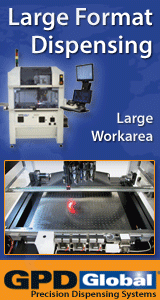IPC — Association Connecting Electronics Industries® announced today the June findings from its monthly North American Printed Circuit Board (PCB) Statistical Program.
PCB Industry Growth Rates and Book-to-Bill Ratios Announced
Rigid PCB shipments were down 7.3 percent in June 2012 from June 2011, and bookings decreased 2.0 percent year over year. Year to date, rigid PCB shipments decreased 5.4 percent, but bookings increased 2.1 percent. Compared to the previous month, rigid PCB shipments were up 11.6 percent and rigid bookings gained 11.8 percent. The book-to-bill ratio for the North American rigid PCB industry in June 2012 continued to slip, but remained above parity at 1.01.
Flexible circuit shipments in June 2012 were up 2.1 percent, and bookings were down 8.4 percent compared to June 2011. Year to date, flexible circuit shipments decreased 7.1 percent and bookings decreased 3.4 percent. Compared to the previous month, flexible circuit shipments increased 29.7 percent and flex bookings were up 14.9 percent. The North American flexible circuit book-to-bill ratio remained high at 1.16.
For rigid PCBs and flexible circuits combined, industry shipments in June 2012 decreased 6.6 percent from June 2011 and orders booked decreased 2.7 percent from June 2011. Year to date, combined industry shipments were down 5.6 percent and bookings were up 1.6 percent. Compared to the previous month, combined industry shipments for June 2012 increased 13.0 percent and bookings increased 12.1 percent. The combined (rigid and flex) industry book-to-bill ratio in June 2012 decreased slightly, but continued in positive territory at 1.02.
“North American PCB sales and orders were up in June compared to the previous month, which is consistent with seasonal patterns,” said Sharon Starr, IPC director of market research. “Rigid PCB business continued below last year’s levels, but orders continue to outpace sales, which is encouraging,” she added. “The June book-to-bill ratios remained in positive territory for the seventh consecutive month and maintained an especially strong performance in the flexible circuit segment of the industry.”
The book-to-bill ratios are calculated by dividing the value of orders booked over the past three months by the value of sales billed during the same period from companies in IPC’s survey sample. A ratio of more than 1.00 suggests that current demand is ahead of supply, which is a positive indicator for sales growth over the next two to three months.
Book-to-bill ratios and growth rates for rigid PCBs and flexible circuits combined are heavily affected by the rigid PCB segment. Rigid PCBs represent an estimated 90 percent of the current PCB industry in North America, according to IPC’s World PCB Production Report.
The Role of Domestic Production
IPC’s monthly survey of the North American PCB industry tracks bookings and shipments from U.S. and Canadian facilities, which provide indicators of regional demand. These numbers do not measure U.S. and Canadian PCB production. To track regional production trends, IPC asks survey participants for the percent of their reported shipments that were produced domestically (i.e., in the USA or Canada). In June 2012, 81 percent of total PCB shipments reported by survey participants were domestically produced. Domestic production accounted for 81 percent of rigid PCB and 74 percent of flexible circuit shipments in June by IPC’s survey participants. These numbers are significantly affected by the mix of companies in IPC’s survey sample, which change slightly in January, but are kept constant through the remainder of the year.
Bare Circuits versus Assembly
Flexible circuit sales typically include value-added services such as assembly, in addition to the bare flexible circuits. In June, the flexible circuit manufacturers in IPC’s survey sample indicated that bare circuits accounted for about 40 percent of their shipment value reported for the month. Assembly and other services make up a large and growing segment of flexible circuit producers’ businesses. This figure is also sensitive to changes in the survey sample, which may occur at the beginning of each calendar year.
Interpreting the Data
Year-on-year and year-to-date growth rates provide the most meaningful view of industry growth. Month-to-month comparisons should be made with caution as they may reflect cyclical effects and short-term volatility. Because bookings tend to be more volatile than shipments, changes in the book-to-bill ratios from month to month may not be significant unless a trend of more than three consecutive months is apparent. It is also important to consider changes in bookings and shipments to understand what is driving changes in the book-to-bill ratio.
The information in IPC’s monthly PCB industry statistics is based on data provided by a representative sample of both rigid and flexible PCB manufacturers in the USA and Canada. IPC publishes the PCB Book-to-Bill Ratio and the PCB Statistical Program Report each month. Statistics for the previous month are not available until the last week of the following month.
IPC (www.IPC.org) is a global trade association based in Bannockburn, Ill., dedicated to the competitive excellence and financial success of its 3,100 member companies which represent all facets of the electronics industry, including design, printed board manufacturing, electronics assembly and test. As a member-driven organization and leading source for industry standards, training, market research and public policy advocacy, IPC supports programs to meet the needs of an estimated $2.02 trillion global electronics industry. IPC maintains additional offices in Taos, N.M.; Arlington, Va.; Stockholm, Sweden; Moscow, Russia; Bangalore, India; and Shanghai, Shenzhen and Beijing, China.
Editors: See attached PDF charts.
 »
»





